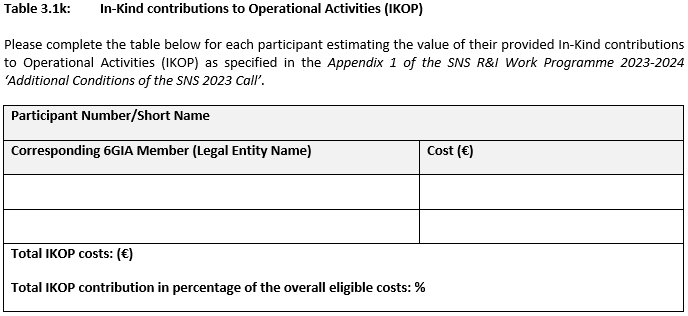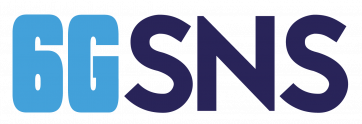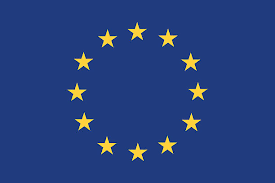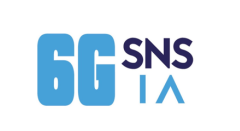SNS Call 2 – Frequently Asked Questions
The second Call for proposals of the Smart Networks and Services Joint Undertaking (SNS JU) opened on 17 January 2023 with a proposal submission deadline on 25 April 2023.
To help proponents of the second Call (referring to SNS 2023 R&I Work Programme) of the Smart Networks and Services Joint Undertaking (SNS JU), frequent questions that have been raised by proponents or National Contact Points (NCPs) are addressed below. This list will be updated as new questions emerge.
CALL CONDITIONS AND PARTICIPATION
The SNS 2023 R&I Work Programme published on the SNS web site includes an Appendix, page 42, which specifies the call conditions, which notably states that:
For RIAs under Streams B, C and IAs under Stream D, the award criteria table is
complemented as follows:
– Introduction in the impact section of a sub criterion assessing the proposal contribution to
the reinforcement of an EU supply side in the context of sovereignty;
– Introduction in the impact section of a sub criterion assessing the proposal contribution to
the overall SME objective as appropriate;
– Introduction in the impact section of a sub criterion assessing the proposal contribution to
the IKOP objectives;
The sub-criterion is to be found in the table of section 1.4 that outlines the main evaluation criteria for the various actions.
The introductory part of the call conditions appendix outlines that the overall IKOP generation objective for this call represents € 8 million in total, i.e. 6% of the overall EU funding of the call that is € 132 million.
This has to be understood as follows: the total budget for the call, € 132 million, should generate a level of funding of eligible costs not covered by the cumulative project reimbursed budgets of 6%, i.e. € 8 million. Only profit making companies being member of the 6G Infrastructure Association (6G-IA) contribute to IKOP generation. The appendix also specifies that “for proposals submitted under Stream B Topics other than the topics outlined in Table App 2 of section 1.2 below, reaching the 6% IKOP programme level objective corresponds in average to 2,6% IKOP at individual proposal level.” This is an average value based on the average composition of partner types in a proposal. Note that universities do not contribute to the IKOP, but receive 100% of their costs in all projects.
At evaluation level, the Work Programme appendix explains under section 1.6 how the IKOP level of a proposal may be used to sort out the ties between two or more equally ranked proposals.
IKOP generation is linked to i) 6G-IA membership; ii) funding rate. Whatever the proposal, IKOP can only be generated by a participant that is member of the 6G Smart Networks and Services Industry Association (6G-IA). If a partner is a profit making company, it is reimbursed either at 90% for RIA or at 70% for IA. Then its IKOP generation is either 10% or 30% of the eligible costs of this partner that are not reimbursed by the project budget. But if a 6G-IA partner of the proposal is a non-for-profit member (e.g., university, research center, etc.) it is entitled to 100% reimbursement of its eligible costs and hence does not generate IKOP, although being a member of 6G-IA. IKOP generation for a given partner is hence computed as the percentage of eligible costs that are not reimbursed by the project and this depends on the type of partner.
NB: For 6G-IA members from UK and CH that participate as Associated Partners, all their requested amount is considered as IKOP.
Stream D does not exclusively focus on commercial equipment. Advanced testbeds or pilot infrastructure may as well be considered. If commercial equipment is to be procured, it is to be done according to the rules for purchasing equipment or services as described in the Model Grant Agreement (MGA).
For restricted topics, only 6G-IA members can be part of the beneficiaries. Sub-contracting applies to very specific work or service procurement and should in any case not be seen as a means to conduct mainstream R&I work.
The UK expressed its interest to be an associated country to Horizon Europe. However, they are at this moment not associated. Therefore, the new version of the General Annexes apply (see section B, eligibility):
[…] For the purposes of the eligibility conditions, applicants established in Horizon 2020 Associated Countries or in other third countries negotiating association to Horizon Europe will be treated as entities established in an Associated Country, if the Horizon Europe association agreement with the third country concerned applies at the time of signature of the grant agreement.
See the Horizon Europe List of Participating Countries on the Portal for an up-to-date list of associated countries.
Therefore, UK applicants should be treated as entities established in an associated country throughout the process, from admissibility and eligibility to evaluation, up until the preparation of grant agreements. However, if, by the time of the signature of the grant, UK has not signed the association agreement, those UK entities in the selected projects will be treated as 3rd country partners (with the option to become Associated Partners that can be supported by the Horizon Europe Guarantee scheme in UK). About 8 weeks before the Time to Grant, UK applicants impacted by a delayed association should be informed of the situation and of the need for the consortium to decide on the final outcome of the contingency measures on the proposal in question. Please note that it has been formally announced that the UK guarantee scheme will be extended to proposals submitted to Horizon Europe calls closing on or before the end of June 2023. See UK announcement on guarantee extension.
Any update of the situation will be reported in this FAQ.
It is up to the proponents to decide what best corresponds to their plans and exploitation timeline.
The SNS-JU is industry driven, which means that industrial exploitation is targeted at some stage as an important outcome, and this is reflected in the “Impact” evaluation criterion. Academics are important and necessary for low TRL innovative technologies, but it is also important to outline how the research results may be taken up by industry or start-ups.
Restricted 6G-IA means that partners in these project proposals must be members of the 6G-IA, or an affiliated entity to a member of the 6G-IA.
This is correct, but not limited to it. Organisations from Associated countries are also eligible for funding, see list of associated countries in the Horizon Europe Work Programme 2023-2024 General Annexes, section B.
It depends if the call is restricted or not. See section 1.2 of the appendix to the Work Programme.
For such restricted topics, even participants at zero cost to the HE budget are expected to be part of the 6G-IA.
The general Work programme of the SNS JU for 2023 specify in Annex the target level of IKAA for 2023 and the type of activities they cover. However, it is not requested that these activities take place in the context of proposals implemented under SNS JU calls. These are planned to come from additional activities, and as such do not need to be planned in the proposals. There is hence no evaluation criterion planned to cover IKAA; only IKOP is taken into account.
Following the Council Implementing Decision (EU) 2022/2506, as of 16th December 2022, no legal commitments (including the grant agreement itself as well as subcontracts, purchase contracts, financial support to third parties etc.) can be signed with Hungarian public interest trusts established under Hungarian Act IX of 2021 or any entity they maintain. Affected entities may continue to apply to calls for proposals. However, in case the Council measures are not lifted, such entities are not eligible to participate in any funded role (beneficiaries, affiliated entities, subcontractors, recipients of financial support to third parties). In this case, co-applicants will be invited to remove or replace that entity and/or to change its status into associated partner. Tasks and budget may be redistributed accordingly.
Please also refer to the F&T Portal FAQs on how the Council Implementing Decision (EU) 2022/2506 on measures for the protection of the Union budget against breaches of the principles of the rule of law in Hungary affects the participation of the concerned legal entities in Horizon Europe actions published on the Portal. This FAQ list may be updated following further guidance.
CASCADE FUNDING, FINANCIAL SUPPORT TO THIRD PARTIES (FSTP)
There is no recommendation for IKOP generation by the third parties that will join the project after the call for additional third-party financing has been successfully completed.
For the purpose of the call, the 20% should be computed against the budget actually allocated to the proponents (i.e. 80% for Stream D). It may though be indicated in the proposal that cascading grants will be targeted towards SMEs. In that case, the percentage of SME participation may be computed against the full proposal budget, not against the 80% of the identified partners at the time of the proposal submission.
If the beneficiary is a non-profit legal entity, it can be reimbursed up to 100 % of the total eligible costs. If the beneficiary is however a commercial entity, the funding rate will be up to 90 % for Research and Innovation Actions (RIA) or 70% for Innovation Actions (IA). The consortia are free to choose the beneficiary that will receive and distribute the funding. The call conditions appendix to the work programme though suggests (section 1.9): “It is recommended that the beneficiary providing third party financing is an entity eligible for 100% of reimbursement of the eligible costs.”
The beneficiary chosen to organise the cascading calls are free to define the rules, principles and rates that they will apply for distributing the funding and selecting third party recipients as long as some basic principles, such as transparency, are met.
See section 1.9 of the call conditions appendix to the work programme. The maximum amount to be granted to each third party has been set at € 300k for this call, related to specific activities that are outlined in the appendix. If the maximum amount to be granted to each third party exceeds the Horizon Europe default amount (€60K) planned for such actions, a proper justification has to be provided.
When drafting a proposal for a topic where Financial Support to Third Parties (FSTP) has been planned (Stream D topic), the online submission tool will give you access to a zip file for download. This zip file contains the part B template, an annex for FSTP declaration and an annex on Security Declaration (please see Security Provisions for Stream D section). The part B text should explain how FSTP activities contribute to the workplan and objectives, and the FSTP annex should be filled out to provide extra information for the planned FSTP.
The information in the annex will not be counted as pages in excess to the page limitation (100 pages) and will be taken into account for the evaluation process.
CALL COVERAGE AND SCOPE
NTN is not majored in this call as the issue was already fairly well covered in the first SNS call. It is though a considered topic, notably in the architecture topic under Stream B. In that case, drones HAPS and satellite are valid topics to consider.
There is no blockchain specific topic but it may be considered where appropriate, e.g. under the security part of Stream B (this is not limitative).
This call includes a focus topic on microelectronics in partnership with KDT. SNS will be key to define microelectronics components for 6G, e.g., THz components as an example, but complementary in-depth R&D can be taken up by KDT so cooperation between the two JU’s is being sought. SNS may address components requirements, performance and technologies, but detailed implementation aspects (integration of heterogeneous techs, packaging, etc.) is rather in the KDT domain. It is also planned for future Work Programmes that SNS can support validation of technologies developed by KDT in the context of integrated PoC’s or pilots.
Coverage of the topic is left to the proponents. Proponents are free to address a subset of the bullets outlined in a given topic or all of them. This is not an evaluation criterion.
Topics on quantum communications are not excluded, but this is not in strong focus in the SNS as it is already addressed in cluster 4 calls of Horizon Europe.
“Large-scale pilots” refers to test cases, which are demonstrating the functionalities and the service requirements that could be considered representative to operational conditions. The interpretation may depend on the use case and demonstrated functionalities. As an example, a large-scale pilot in the connected car domain could be considered as “large” if the stretch of motorway is long enough to include several access points, e.g., to demonstrate continuity of service while moving. On the other hand, other use cases may imply that large scale would require a large enough collection of cars, e.g., in the case of a car-to-car communication use case.
Such collaboration topics are not planned for this call, but Japanese or Korean partners may participate, though without being funded from the EU SNS budget. Specific topics for cooperation with Japan/SK are currently under discussion for the 2024 work programme.
Bottom-up cooperation at project level is always possible, with SNS participants in a project also participating in other EU funded activities and establishing a targeting link with these other EU funded initiatives. A more top-down approach is being targeted with specific actions like KDT on microelectronics.
6G INFRASTRUCTURE ASSOCIATION (6G-IA) ISSUES
It is preferable that the mother group becomes member of the Association, which gives access to affiliate entities, if headquartered in Europe.
According to the statutes of the 6G-IA: Affiliate of a legal entity means a legal entity directly or indirectly Controlled by, or under common Control with or Controlling such legal entity, for so long as such Control lasts. For the above purposes, “Control” of any entity shall exist through the direct or indirect:
– ownership of more than 50% of the nominal value of the issued share capital of the entity or of more than 50% of the issued share capital entitling the holders to vote for the election of directors or persons performing similar functions
– right by any other means to elect or appoint managing board members of the entity (or persons performing similar functions) who have a majority vote.
Yes, they can participate.
No, it is not.
PROPOSAL STRUCTURE ASPECTS
Indeed, the former EC H2020 Part B Section 5 on Ethics and Security is now included in EC HEU (SNS) Part A Section 4.
QUESTION: Concerning the Partners Profiles incl. Organization Profile and Partners “Champions” and short CVs previously captured in EC H2020 Section 4, part of the information will be included in EC HEU (SNS) Part A in dedicated Forms. The forms in Part A are “light” (just a Table listing the Researchers involved in the Proposal, 5 Publications…). Part of the information can be included in Part B Sub-Section 3.2 “Capacity of participants and consortium as a whole [e.g. 10 pages]“ in which the Partners roles can be presented, but not the detailed Profiles / CVs. Should the Partners Profiles incl. “Champions” CVs be included as Annex to Part B and count in the 100 pages? According to the EC Manual (https://ec.europa.eu/info/funding-tenders/opportunities/docs/2021-2027/common/guidance/om_en.pdf – Page 31/81))
ANSWER: Concerning the Partners Profiles, indeed a “light” part of the information will be included in EC HEU (SNS) Part A in dedicated Forms, while additional information on partners roles and capacity will be included in Part B.
Annexes to Part B are only meant for extra information and will not be counted in the page limit (e.g. 100 pages limit). If the uploaded document for part B does contain more than the specified page limit, information contained in these extra pages will not be evaluated. Information that is important and to be evaluated to support the proposal must be, for the part B of the proposal, within the page limit as appropriate for the selected topic.
The additional Annexes might be used to develop the description of procedures e.g., on financial support to third parties/cascading grants, or for ethics/security related aspects. These will not be counted as pages in excess to the page limitation and will be taken into account as extra information.
Each partner in the proposal contributing to IKOP generation should fill up one line in the table, including the participant number in the proposal, the short name, and the name of the 6G-IA member it is linked to. In the “cost” column, the absolute value of the € value of the generated IKOP for this partner is indicated. This is summed at the bottom and divided by the overall eligible costs, to compute the percentage of IKOP generated by the proposal.

The suggested limitations of the online manual for what concerns number of deliverables and work packages relate to the default limitation of 45 pages for standard Horizon Europe proposals. As the page limits for SNS call is different, it does not apply.
Appendix 1 of Work Programme published on the SNS web site outlines that this should be subject of a self-declaration of the consortium. This short declaration may be added to the summary list of consortium members at the beginning of part B of the proposal. It is a duty of the consortium coordinator to verify that all consortium members actually comply with the 6G-IA membership rule for such restricted topics.
The same mechanism applies for the topics where it is requested that half of the consortium budget is implemented by 6G-IA members.
The full members as well as the associate 6G-IA members are listed at the 6G-IA web site (https://6g-ia.eu/). As 6G-IA is frequently receiving and approving new membership applications, it may take a few days for newly accepted members to appear on the web site. Note also that the definition of affiliated entity to a 6G-IA member can be found in the section “6G INFRASTRUCTURE ASSOCIATION (6G-IA) ISSUES”.
SECURITY PROVISIONS (Stream D Proposals only)
All Horizon Europe proposals have to go through a security and ethics self-assessment. A specific table in the proposal part A is to be filled to that purpose. SNS Large Scale Trials and Pilots (LST&Ps) with Verticals, (stream D) proposals have to go through a supplementary security declaration, in accordance with Article 170.1 of the COUNCIL REGULATION (EU) 2021/2085 of 19 November 2021 establishing the Joint Undertakings under Horizon Europe.
The security declaration consists in an analysis from the consortium outlining i) if there are cybersecurity risks and ii) how they will be mitigated in the context of the implementation of the proposed work. Page 34-35 of the Work Programme published on the SNS web site, under Stream D Specific Challenges and Objectives, outlines typical cases as:
1) A test infrastructure is connected to an operational network, or is using resources from an operational network. This could lead to a cyber-security risk in scope of the 5G cyber-security toolbox. 2) Large scale test infrastructure is standalone, i.e. not connected to an operational network, but utilises close-to-commercial equipment. In this case, connectivity of this operational equipment (or of equipment from vertical companies trialling specific use cases) to equipment from entities established in or controlled from third countries may lead to exchange of project results potentially causing security risks or undermining a sustainable supply chain from an EU perspective
The security declaration should focus on potentially sensitive information from the cybersecurity point of view, potentially exposed within the consortium and further exploitable by third country entities to compromise an operational infrastructure or equipment’s that may be used in a complete operational infrastructure. Example: if a network equipment implements in open source an algorithm used in operational systems, the exposed knowledge may be used to later compromise an operational infrastructure. More broadly, the analysis is meant to focus on documents, information and results related to equipment or services deployed or used within the proposed project and to make sure that it will be duly protected and not lead to exposure of sensitive information in the cybersecurity context. So the proposal should synthetically describe the possible risks (if any) and the mitigation measures to alleviate/suppress them.
In terms of duration, the protective measures, if needed, should remain in place during the project duration and after if it is further used beyond the project duration (which may be the case as the SNS programme is designed to build test and experiment facilities with gradual upgrades over time and phases. This is further outlined in the appendix of the Work Programme published on the SNS web site.
Participation from third countries and non-EU Member States entities is fully possible. It is recognised that for some equipment, services or software, entities from non-EU Member States may be needed and relevant as participants. However, proposals are expected to demonstrate EU-added value, with particular attention to the role of suppliers in the cyber-security of the network/service elements deployed for large-scale experimentation or piloting, as well as in the development of a sustainable supply chain from an EU perspective. This is particularly relevant when security-sensitive information needs to be exchanged among project partners or accessed by them.
The part A of the proposal includes a “security issues” table that has to be filled out for all proposals. In the case of Stream D proposals, possible security risks in the sense of cybersecurity risks as described in the call text should be identified here, notably under the second question of item 3 in the table “Other security issues”. This text in part A is however limited to 1000 characters. Further information may hence be included in the mandatory security annex to part B, detailing the planned mitigation measures to alleviate or suppress the identified security risks.
Important note:
The submission process of a Stream D proposal on the participant portal provides access to a zipped file, including the proposal part B template, an annex template for Financial Support to Third Parties (cascade funding) and an annex template for a security declaration. The security declaration annex should primarily describe mitigation measures for the potentially identified cybersecurity risks (except if Not Applicable). Please also refer to Appendix 1 of the SNS R&I Work Programme 2023-2024 ‘Additional Conditions of the SNS 2023 Call’ for specific security provisions applicable to Stream D.
B-01-06: EU-US 6G R&I Cooperation
HORIZON-JU-SNS-2023-STREAM-B-01-06 is not a joint call, therefore awarding of funding for both the EU and the US partners is not expected to be synchronized.
According to the eligibility conditions that apply for STREAM-B-01-06 and as described in Annex B of the Work Programme General Annexes, US partners are not eligible for funding. Please note that US subsidiaries are eligible if they are established in countries eligible for funding under Horizon Europe rules.
This is not a joint call between EU and US funding entities. It is not expected to include US based entities in the consortia.
NB: “US based entity” in that context has to be understood as an entity that is running the R&I activity in the USA for the purpose of the proposals under consideration. It is not to be understood as the EU R&I arm/subsidiary of a US company. “
Applicants are free to decide on the proposed approach with regards to cooperation with US stakeholders. It is expected that the applicants show that links with the US R&I ecosystem have been established and that the intention to work with US based entities is demonstrated. It is up to applicants to select how these links will be established. It is not expected to include US based entities in the RIA proposals. Only information on which US activities, topics and current running projects that the RIA targets to work with, is expected.


